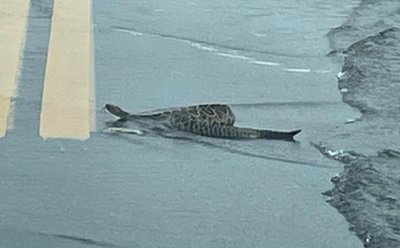
TAMPA, Fla. (WFLA) -- Hurricane Idalia left anywhere from a few inches to a few feet of standing floodwaters in cities across the Florida Gulf Coast on Wednesday.
Emergency officials urge residents to stay out of the water for a myriad of reasons, including the risk of drowning and injury from hidden debris, but floodwaters also contain many things that pose a serious health risk.
According to the Centers for Disease Control and Prevention (CDC), it's impossible to know exactly what is in floodwaters. It could contain sharp debris or even downed power lines obscured by the murky depths.
Floodwaters can also contain dangerous wildlife. On Wednesday, the Hernando County Sheriff's Office posted photos of a rattlesnake navigating a flooded street.
"You never know what could have washed in with the flooding," the sheriff's office said.
Floodwaters can also hold hazards that are invisible to the naked eye. According to the CDC, it can contain human and animal feces, medical/industrial waste, pesticides and other harmful substances.
Because floodwaters can contain sewage, eating or drinking anything contaminated by the water can cause diarrheal disease (such as E. coli or Salmonella infection). For individuals with open wounds, exposure to contaminated water can cause infections (like tetanus) and skin rashes.
To protect yourself and your family, the CDC recommends that you:
- Wash your hands after contact with floodwaters. Also be sure to wash children’s hands with soap and water often and always before meals.
- Do not allow children to play in floodwaters.
- Do not allow children to play with toys that have been contaminated by floodwaters and have not been disinfected.
- Do not bathe in water that may be contaminated with sewage or toxic chemicals. This includes rivers, streams, or lakes that are contaminated by floodwaters.
If you must enter floodwater, the CDC recommends wearing rubber boots, rubber gloves, and goggles. If you come in contact with floodwaters:
- Wash the area with soap and clean water as soon as possible. If you don’t have soap or water, use alcohol-based wipes or sanitizer.
- Take care of wounds and seek medical attention if necessary.
- Wash clothes contaminated with flood or sewage water in hot water and detergent before reusing them.
For more information about the health risks involved with floodwaters, visit the CDC website.